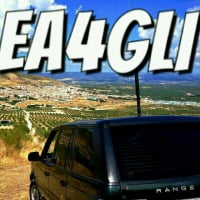Welcome to the FlexRadio Community! Please review the new Community Rules and other important new Community information on the Message Board.
Need the latest SmartSDR or 4O3A Genius Product Software?
SmartSDR v4.1.3 | SmartSDR v4.1.3 Release Notes
SmartSDR v3.10.15 | SmartSDR v3.10.15 Release Notes
The latest 4O3A Genius Product Software and Firmware
SmartSDR v4.1.3 | SmartSDR v4.1.3 Release Notes
SmartSDR v3.10.15 | SmartSDR v3.10.15 Release Notes
The latest 4O3A Genius Product Software and Firmware
If you are having a problem, please refer to the product documentation or check the Help Center for known solutions.
Need technical support from FlexRadio? It's as simple as Creating a HelpDesk ticket.
Need technical support from FlexRadio? It's as simple as Creating a HelpDesk ticket.
How-To 2m and 70cm DEMI Transverters on a 6700 & Questions
Comments
-
Yay!!! I can't wait.
I bought the diplexer but had no clue about this one.
I guess I am ordering yet another thing from DEMI
0 -
It end up being Roy AC2GS idea of an external RF Switch all along!!!
Well, it has been over a year planing and buying things to get to this point.
I am literally a few weeks away from a complete Flex 6700 Full Duplex Sat setup. I really can't wait to work my first satellite contact with this!0 -
"All's well that ends well."
I am glad that the powers to be have come up with an elegant solution to the problem.
In the end, I am fine with my setup, which only requires a single Rx and XVTR port and spares the other RCVR port - perhaps for that pre-distortion correction implementation, when using a linear amplifier, one of these fine days.
Have fun talking to things circling this crazy, crazy world <grin>!
Vy 73,
Roy AC2GS0 -
The problem with this is that we ordered our 70CM DEMI XVTER with combined IF. This design requires split IF. Uggggggh....1
-
I got lucky. Along the way I figured I was better off with separate IF on the 70cm transverter.0
-
Just removing a relay in the 70CM DEMI XVTR with combined IF and ad a BNC would solve the problem.0
-
Good point. I was going to suggest to Chris to send it back to DEMI to make it separate IF and then have them return it together with the new purchase of the DIPS.0
-
LDPA was received in OCT 2016.... YAY!
0 -
LDPA received OCT 2016...

0 -
Wow, Roy AC2GS is right, this thread is insane and makes my head hurt.
I love my Flex and would like to start working satellites with the 6500 but I can't help but feel like using the Flex is trying to cram a round peg in a square hole.
I hate to say it because I am a total Flex convert, but for working satellites I think a knob radio is much more practical and more cost effective.
0 -
It is very close to be ideal for sats. But right now it is the software that is falling a bit behind. We need to be able to either sync 2 slices to move them in unison or opposite of each other with a Flex control or a second option, allow for the use of 2 Flex controls. Having a visual clue in smartsdr to the status of the TX relays will also help. Remember to use your profiles.0
-
Lee.... I'm working SAT's without issue with the FLEX 6500, 2 Elecraft Transverters, and switches... for software I'm using SATPC32.. it controls both slices (one open for TX one for RX) and it also points my antenna's (controls the Yeasu G-450A)
To log my contacts I use Log4OM which tracks the frequency as well as the SAT worked (yes it has a SAT mode as well)
It's not as difficult as this thread makes it out to be.
FYI.. I sold my ICOM-9100, working SATS with the FLEX is easier because I can SEE the sat appear on the scope, see where a QSO is taking place and tune to that freq
David0 -
Here it is in action and as you can see XW-2D has some noise in the center of the frequency.
2 -
This looks like where I want to be as well. Interesting that you sold your 9100 because that was the other option.
Thanks for the explanation.0 -
Salvador, it's my understanding that only the downlink frequency needs to move to compensate for doppler.
I am also a little confused on the issue of split IF's. I need to do more research on this to better understand that issue.
Thanks0 -
Lee, feel free to reach out to me if you have questions, e-mail is good in QRZ..
I'm trying to put details of setup on my webpage but haven't gotten there yet, also have a bulliten board I just setup and trying to upload information there as well just so much to do and so little time to do it.
Call sign KK4QOE, web site kk4qoe.us
David0 -
David, thank you very much for your offer and I might just take you up on this.
If I can repay the favor by helping you with any web site stuff let me know.
Lee0 -
Doppler affects both frequencies.0
-
DOH ! of course how could it not.
I might have read that the FM birds automatically compensate for the uplink frequency because it's only one channel, is that possibly why I got this wrong ?
It certainly makes sense that the doppler is an issue on a linear transponder.
Help me out here, do I have this correct ?0 -
Nope, you need to move both. MacDoppler is what i use for satellite automation, and it handles everything with aplomb.
0 -
No worries. I am a newbie on the birds. The 6700 could be a fantastic tool for Satellites, right now, it is tough at times. Most of the "best practices" based on superhet radios without panadapter don't really work with SmartSDR. And SmartSDR has not been really designed to work with Satellites. My current, most comfortable approach makes use of the flex control and I mapped a click on the main wheel to switch between vfos. Logging not always works due to the vfo a and vfo b paradigm and it is too bad that I can't really use slices C through H at all if I want to log the qso. Most Sats only give you a few minutes to get things shorted out. On the other hand, seeing all the action is quite amazing.0
-
Read the entire thread and I do have some question. Using a 6700 with version 2 SmartSDR. The rest of the station is a 2MLDPA and a Demi 70 cm transverter with the DIPS switch set up as per the DEmi diagram. My question relates to the SATpc32 setup. I guess you use the TS2000 option. Given that there are 2 SCU's involved, does SATpc32 see one "radio' or two "radios"? That has obvious implications for the setup of SATpc32. I have tried both options and cannot get either to control the frequency of the A and B slices.
What have others done that has worked?
John
0 -
I have the DEMI 70cm and DIPS on order, but I have simulated the 70cm transverter (the radio does not know it isn't physically attached) and used MacDoppler and DogparkSDR to control everything and it works great. The radio frequencies track perfectly. I am (hoping to) set up my az/el rotator today (G5500), so I will be able to report on MAcDoppler's ability to control it via AMSAT LVB, but if that goes well everything should track the sat automatically. I couldn't get MacDoppler to control the slices in SSDR, even though MacLogger controls them just fine. This could very much just be operator error too hi hi.
I usually run SSDR in a windows 10 VM in Parallels, but DogparkSDR works really well with MacDoppler so for sats I will use that. I know that doesn't help if you aren't a Mac user... but thought I'd throw it in here.0 -
OK - I received my 432-28HP transverter and DIPS from DEMI, got everything hooked up and it works as advertised. I can see signals on 70cm and 2M. I have a question though that I'm hoping someone here can answer, I suspect I have overlooked something simple. When I transmit on 70cm, the transverter keyes up like it should and the LDPA does not, as it should. But when I key up on 2M, the LDPA keys up like it should but the transverter also keys up. This is of course because I am using a key line out from the back of the 6700 to key the 70cm transverter (TX3), so no matter what slice I key up, the transverter also keys up. My question is, what is the correct way to key the transverter? Is there a way to assign TX3 to a specific slice, the one I am using for 70cm? Is ther some other way that I should be keying the transverter with this setup using the DEMI/DIPS? Thanks to anyone who has an answer. :-) Justin KL2D0
-
Hi Justin,
I waded through this thread <grin> as an investment in education. And, I appreciate all the the kind efforts of those asking for and offering solutions. As it seems I may have gotten close to being better informed, I am interested in the disposition of the issue you were having with keying of your transverter at the same time as the LDPA as described above.
Any solution on that front?
Thanks much!
Mark W9AT
1 -
Hi Mark - What I ended up doing is using the external TX 3 port on the 6700 to key the 70cm transverter. The LDPA does a great job of either keying or not keying via the USB on the 6700 depending on if you have 2M selected for transmit, and I just have to manually either enable or disable the TX 3 port in the radio settings when I want to transmit on 70cm. Not a huge deal, but not as automatic as I would like. Overall the DEMI setup for 70cm and 2M is a great way to work sats full duplex. With the right transmit port setup it works flawlessly, and with Macdoppler and DogparkSDR the radio and antenna track the sats automatically. It’s pretty awesome. ;-) Hope that helps, feel free to let me know if there is any other info I can pass on to help you! 73 Justin KL2D1
-
Thanks much, Justin, for your reply. If you're game, I have a couple "bonus round" questions <grin>
1. I understand the DIPS solution from DEMI used with the LDPA & 432 transverter requires the transverter to have split IF. What function does the optional split RF in the transverter provide? Does it just reduce the need for an additional mast relay if using a mast-mounted LNA? Other functions beside that?
2. If I understand correctly, the LDPA without power goes into "bypass"--effectively having the IF bypassing the LDPA for a "downstream" transverter. With the LDPA, DIPS, and 432 transverter set-up like you have, what cabling/configuration/additional-equipement is involved with adding an additional transverter (for example a 23cm transverter)?
Thanks again!
73
Mark W9AT
0 -
Hi Mark -
I'd love to answer both of those questions, but since I don't have any experience with either one I would just be making stuff up.... ;-)
I would actually reach out to DEMI on both of those. I have had a couple of questions and find that they respond pretty quickly to emails.
Sorry I don't have more info,
73
Justin
KL2D0 -
I can answer the 23cm xvtr one. I have one, and when I use 1.2GHz the 144 amp turns off and the 144 IF BYPASSES the amp and goes into the 1.2ghz transverter. This will allow me to work AO-92 in L mode. All you need is a coaxial from the 144amp bypass port to the 1.2ghz transverter IF in. I also use the DEMI 10mhz hub and send a 10mhz reference to the 1.2ghz for extra stability.0
-
Thanks Justin, you were a big help already. I have a weekend message sent to DEMI with lots of ordering-related questions. (I'm interested in learning how many business days it takes for an email reply of answers to a sales-related message. I am encouraged because of your experience.)
Salvador, thanks for your input. Do you have the DEMI solution of the LDPA+DIPS+432-transverter with an additional, 23cm transverter? If so, for clarification, I'm trying to understand to what IF the 23cm transverter is connected? (the 432 transverter or something else like a transverter switch?) Am I understanding correctly from your note above that you manually unplug the 432-transverter IF coax and then plug the coax into the 23cm-transverter?
Whether or not you are manually disconnecting the IF coax from one transverter in order to use another, how does SmartSDR "know" which transverter to key? Or, is that an operator-driven configuration change every time you change TX band? (profiles?)
My questions are not meant to imply any comment or judgement, just looking to learn. I think I might be getting close to have my head wrapped around this subject <grin>.
Again, thank you very much.
Mark W9AT
0
Leave a Comment
Categories
- All Categories
- 381 Community Topics
- 2.1K New Ideas
- 631 The Flea Market
- 8.3K Software
- 123 SmartSDR+
- 6.4K SmartSDR for Windows
- 184 SmartSDR for Maestro and M models
- 430 SmartSDR for Mac
- 272 SmartSDR for iOS
- 259 SmartSDR CAT
- 195 DAX
- 382 SmartSDR API
- 9.3K Radios and Accessories
- 39 Aurora
- 265 FLEX-8000 Signature Series
- 7.2K FLEX-6000 Signature Series
- 950 Maestro
- 56 FlexControl
- 866 FLEX Series (Legacy) Radios
- 925 Genius Products
- 463 Power Genius XL Amplifier
- 337 Tuner Genius XL
- 125 Antenna Genius
- 297 Shack Infrastructure
- 209 Networking
- 460 Remote Operation (SmartLink)
- 144 Contesting
- 788 Peripherals & Station Integration
- 139 Amateur Radio Interests
- 1K Third-Party Software





